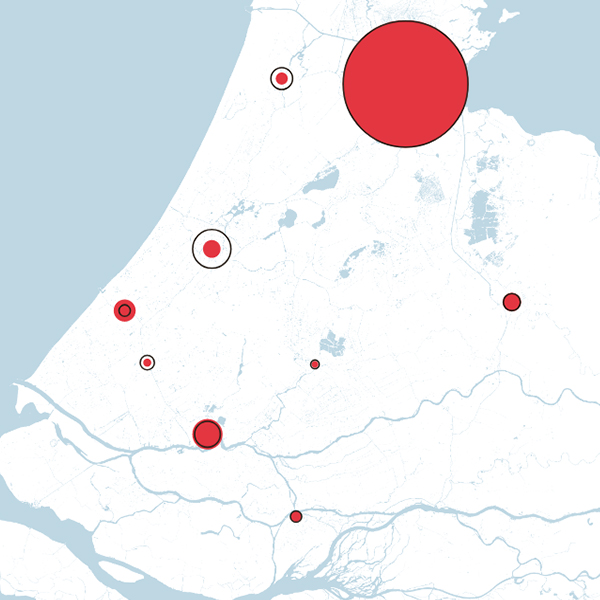Abstract
This article presents the results of a preliminary investigation of eight hundred years of urbanization in the western Netherlands using the ranksize rule. It also forms the introduction to a doctoral thesis on the emergence and transformation of the Randstad ‘urban system’.
Despite the doctrine that emerged regarding the Randstad in the second half of the last century, there is still little consensus about the phenomenon. Not only is its very existence regularly called into question, but it is also unclear whether the multipolar urban development that distinguishes the Randstad within Europe should or should not give grounds for satisfaction. Despite these existential questions, the Randstad remains a key factor in the administrative process. For all its uncertainties, the recent publication of the strategy document Randstad 2040 confirms and indeed acclaims the important role of the towns and cities of the western Netherlands.
For some time the Faculty of Architecture at Delft University of Technology has been running a research programme entitled ‘Mapping the Randstad Holland (1200-2000)’, which does not explicitly deal with the above issues but does focus on historical towns and cities in Holland.4 The findings may make a valuable contribution to the Randstad debate by providing insight into the functioning and transformation of urban systems from their emergence centuries ago right up to the present day.
The aforementioned doctoral thesis, which is part of this research programme, looks at the supraregional scale. The aim is to draw conclusions about the systematic transformation of the Randstad urban system by comparing the longterm development of nine towns: Utrecht, Amsterdam, Haarlem, Leiden, Delft, Gouda, The Hague, Rotterdam and Dordrecht.
How to Cite
Published
Issue
Section
License
Copyright (c) 2010 OverHolland

This work is licensed under a Creative Commons Attribution 4.0 International License.




